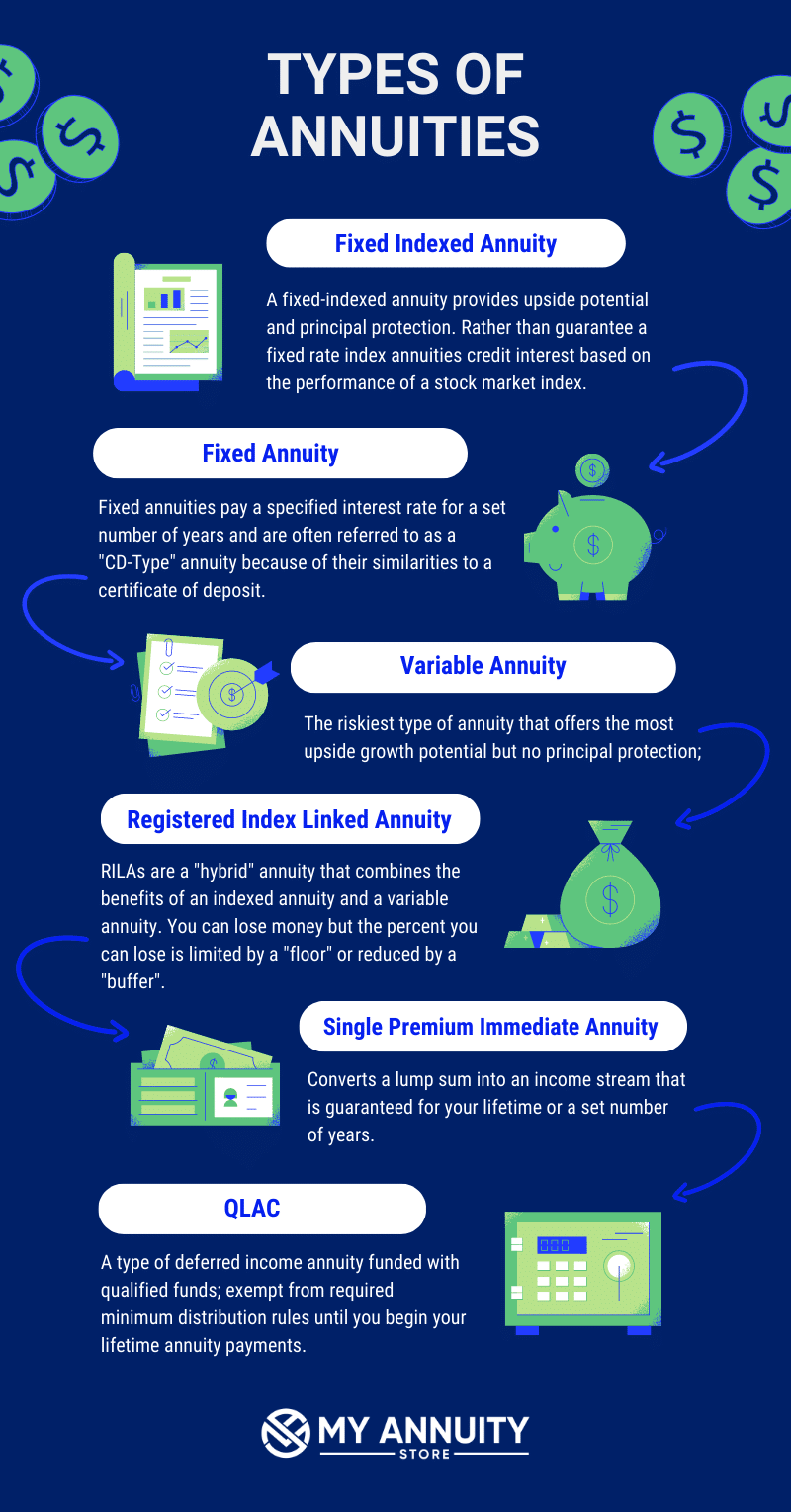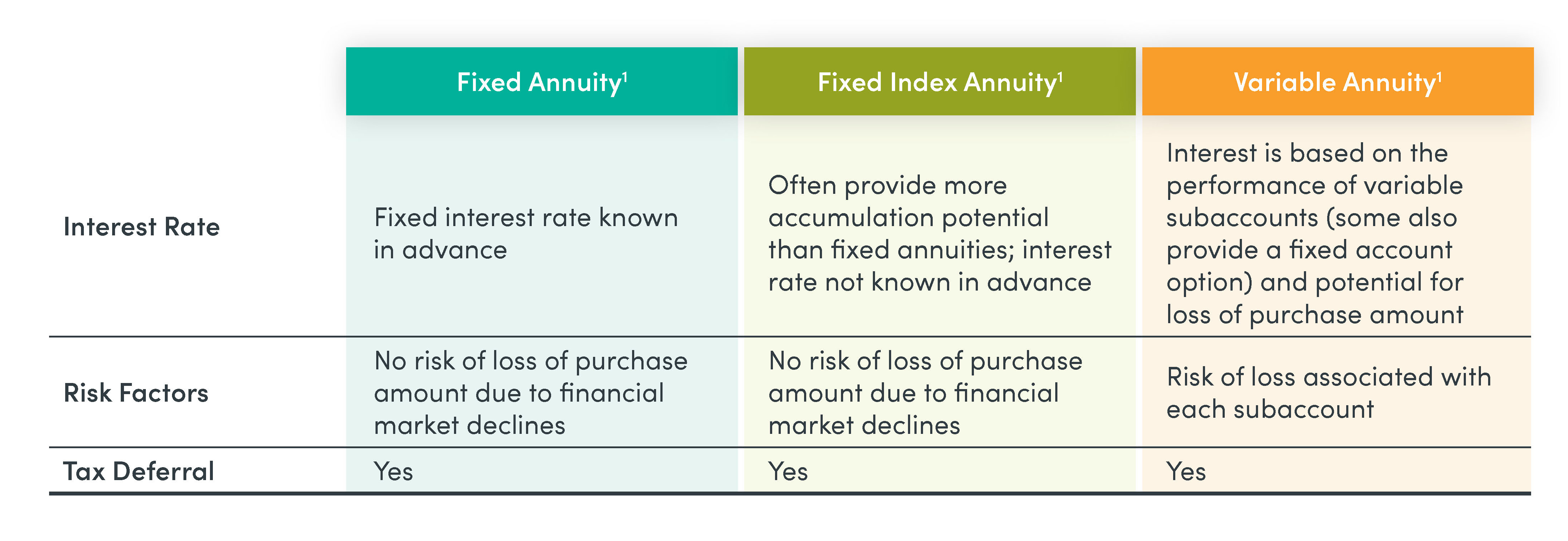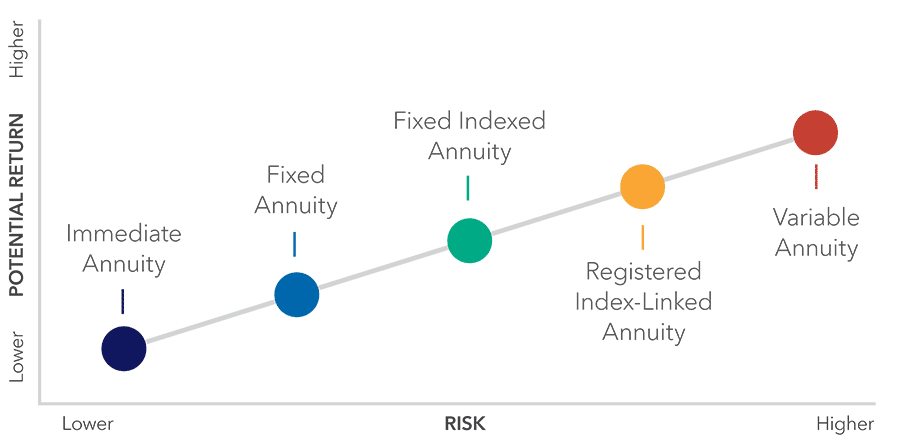All Categories
Featured
Table of Contents
Just as with a repaired annuity, the proprietor of a variable annuity pays an insurance provider a lump sum or collection of settlements in exchange for the assurance of a collection of future settlements in return. However as stated above, while a taken care of annuity grows at a guaranteed, consistent price, a variable annuity expands at a variable rate that depends upon the efficiency of the underlying investments, called sub-accounts.

Throughout the build-up phase, possessions purchased variable annuity sub-accounts expand on a tax-deferred basis and are exhausted only when the contract proprietor takes out those incomes from the account. After the build-up stage comes the earnings phase. With time, variable annuity possessions need to in theory boost in value up until the contract proprietor determines she or he want to start withdrawing cash from the account.
The most considerable issue that variable annuities typically existing is high expense. Variable annuities have numerous layers of costs and costs that can, in aggregate, develop a drag of up to 3-4% of the contract's worth each year.
Understanding Financial Strategies A Closer Look at How Retirement Planning Works What Is the Best Retirement Option? Benefits of Variable Vs Fixed Annuities Why Choosing the Right Financial Strategy Matters for Retirement Planning How to Compare Different Investment Plans: A Complete Overview Key Differences Between Fixed Interest Annuity Vs Variable Investment Annuity Understanding the Rewards of Long-Term Investments Who Should Consider Strategic Financial Planning? Tips for Choosing the Best Investment Strategy FAQs About Immediate Fixed Annuity Vs Variable Annuity Common Mistakes to Avoid When Choosing Fixed Vs Variable Annuities Financial Planning Simplified: Understanding Annuities Fixed Vs Variable A Beginner’s Guide to Fixed Indexed Annuity Vs Market-variable Annuity A Closer Look at How to Build a Retirement Plan
M&E expense costs are computed as a percent of the agreement value Annuity providers pass on recordkeeping and other management prices to the agreement proprietor. This can be in the form of a level yearly fee or a percent of the contract worth. Administrative charges might be consisted of as component of the M&E danger cost or might be analyzed individually.
These fees can range from 0.1% for easy funds to 1.5% or more for actively taken care of funds. Annuity contracts can be customized in a number of means to offer the particular requirements of the contract owner. Some usual variable annuity motorcyclists include guaranteed minimal build-up advantage (GMAB), ensured minimum withdrawal benefit (GMWB), and assured minimum income advantage (GMIB).

Variable annuity payments supply no such tax obligation reduction. Variable annuities tend to be extremely inefficient automobiles for passing wide range to the next generation because they do not take pleasure in a cost-basis modification when the initial contract owner passes away. When the owner of a taxed financial investment account passes away, the price bases of the investments held in the account are adjusted to show the market prices of those financial investments at the time of the proprietor's death.
Exploring the Basics of Retirement Options A Closer Look at How Retirement Planning Works Breaking Down the Basics of Investment Plans Benefits of Choosing the Right Financial Plan Why Choosing the Right Financial Strategy Is a Smart Choice How to Compare Different Investment Plans: A Complete Overview Key Differences Between Fixed Annuity Vs Variable Annuity Understanding the Key Features of Retirement Income Fixed Vs Variable Annuity Who Should Consider Indexed Annuity Vs Fixed Annuity? Tips for Choosing Fixed Annuity Vs Equity-linked Variable Annuity FAQs About Variable Annuities Vs Fixed Annuities Common Mistakes to Avoid When Choosing Fixed Index Annuity Vs Variable Annuity Financial Planning Simplified: Understanding Fixed Vs Variable Annuities A Beginner’s Guide to Smart Investment Decisions A Closer Look at Fixed Annuity Vs Variable Annuity
Therefore, successors can acquire a taxable financial investment profile with a "clean slate" from a tax viewpoint. Such is not the situation with variable annuities. Investments held within a variable annuity do not obtain a cost-basis change when the original owner of the annuity passes away. This suggests that any kind of accumulated unrealized gains will certainly be handed down to the annuity owner's successors, together with the connected tax obligation worry.
One considerable concern associated to variable annuities is the capacity for conflicts of interest that may feed on the component of annuity salesmen. Unlike a financial advisor, who has a fiduciary obligation to make financial investment choices that profit the customer, an insurance broker has no such fiduciary obligation. Annuity sales are highly financially rewarding for the insurance coverage experts who market them due to high upfront sales payments.

Several variable annuity contracts consist of language which positions a cap on the portion of gain that can be experienced by particular sub-accounts. These caps stop the annuity owner from completely taking part in a part of gains that might or else be appreciated in years in which markets generate considerable returns. From an outsider's point of view, it would seem that financiers are trading a cap on investment returns for the previously mentioned guaranteed floor on investment returns.
As kept in mind over, surrender costs can significantly limit an annuity proprietor's ability to move properties out of an annuity in the very early years of the contract. Even more, while most variable annuities enable agreement owners to withdraw a defined amount throughout the accumulation phase, withdrawals beyond this quantity typically result in a company-imposed cost.
Withdrawals made from a fixed rates of interest investment alternative might also experience a "market price change" or MVA. An MVA adjusts the worth of the withdrawal to mirror any type of modifications in rate of interest rates from the time that the money was bought the fixed-rate alternative to the moment that it was withdrawn.

Rather frequently, also the salespeople who offer them do not completely comprehend how they work, therefore salespeople often exploit a customer's feelings to offer variable annuities rather than the values and suitability of the items themselves. We think that capitalists ought to completely recognize what they have and just how much they are paying to own it.
Highlighting Fixed Vs Variable Annuity Everything You Need to Know About Financial Strategies Breaking Down the Basics of Fixed Income Annuity Vs Variable Annuity Pros and Cons of Various Financial Options Why Variable Vs Fixed Annuities Matters for Retirement Planning Annuities Fixed Vs Variable: Explained in Detail Key Differences Between Fixed Income Annuity Vs Variable Annuity Understanding the Risks of Long-Term Investments Who Should Consider Strategic Financial Planning? Tips for Choosing Tax Benefits Of Fixed Vs Variable Annuities FAQs About Planning Your Financial Future Common Mistakes to Avoid When Planning Your Retirement Financial Planning Simplified: Understanding Your Options A Beginner’s Guide to Variable Annuity Vs Fixed Annuity A Closer Look at What Is Variable Annuity Vs Fixed Annuity
However, the very same can not be said for variable annuity assets held in fixed-rate investments. These properties legitimately belong to the insurance provider and would consequently go to threat if the firm were to stop working. Any warranties that the insurance policy company has agreed to offer, such as an ensured minimal earnings advantage, would certainly be in inquiry in the occasion of an organization failure.
Possible purchasers of variable annuities ought to recognize and think about the economic problem of the issuing insurance policy business before entering into an annuity agreement. While the benefits and drawbacks of numerous kinds of annuities can be debated, the real issue bordering annuities is that of viability.
As the saying goes: "Buyer beware!" This post is prepared by Pekin Hardy Strauss, Inc. Fixed income annuities. ("Pekin Hardy," dba Pekin Hardy Strauss Wide Range Management) for informative purposes just and is not planned as a deal or solicitation for service. The details and information in this article does not constitute legal, tax obligation, accountancy, financial investment, or various other expert suggestions
Table of Contents
Latest Posts
Analyzing Strategic Retirement Planning Key Insights on Your Financial Future What Is Fixed Vs Variable Annuity Pros Cons? Pros and Cons of Tax Benefits Of Fixed Vs Variable Annuities Why Variable Ann
Understanding Tax Benefits Of Fixed Vs Variable Annuities Everything You Need to Know About Fixed Index Annuity Vs Variable Annuities Defining the Right Financial Strategy Pros and Cons of Various Fin
Understanding Fixed Annuity Vs Variable Annuity Key Insights on What Is A Variable Annuity Vs A Fixed Annuity Defining the Right Financial Strategy Benefits of Choosing the Right Financial Plan Why Ch
More
Latest Posts